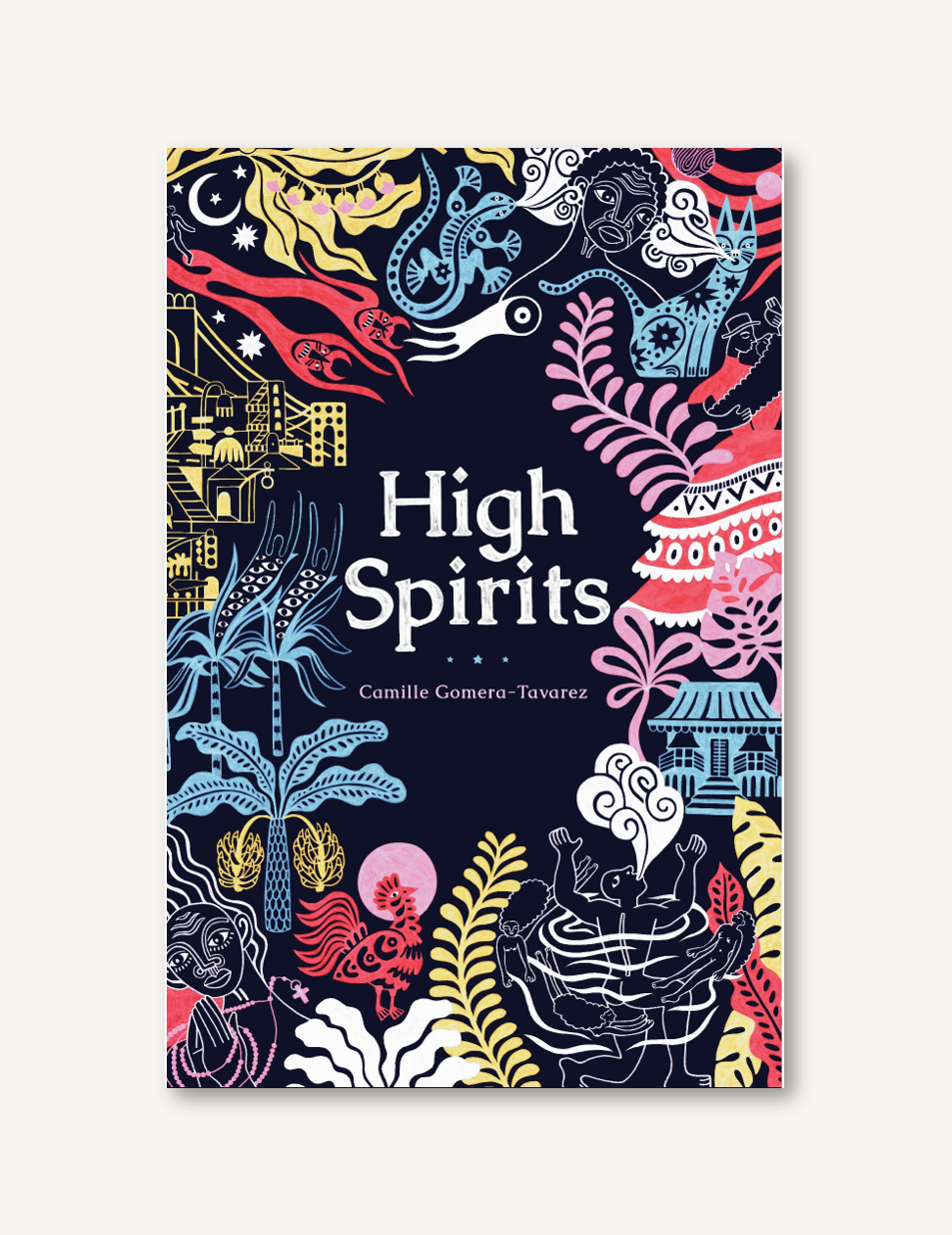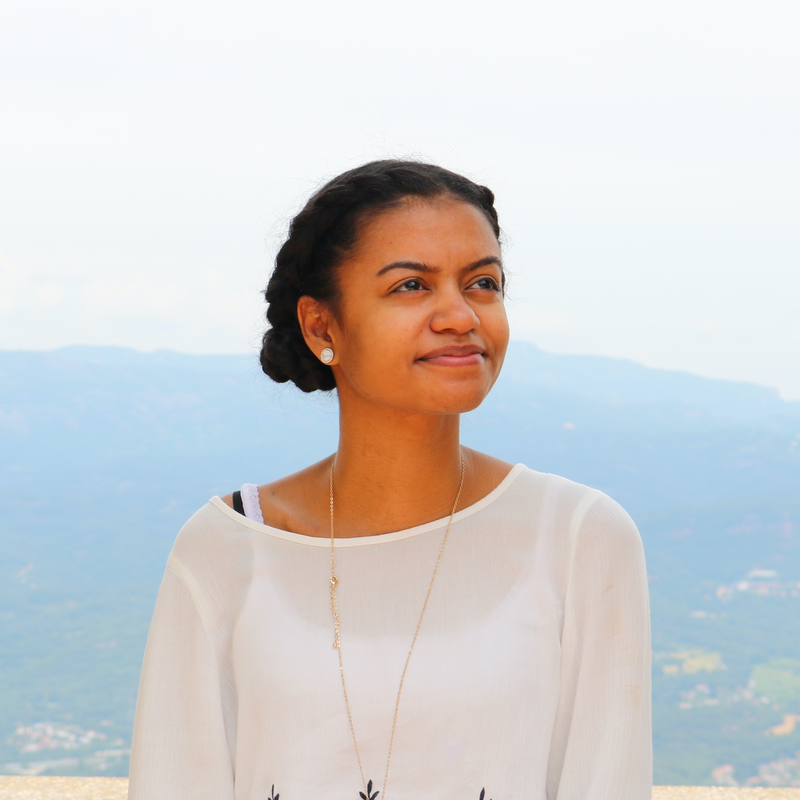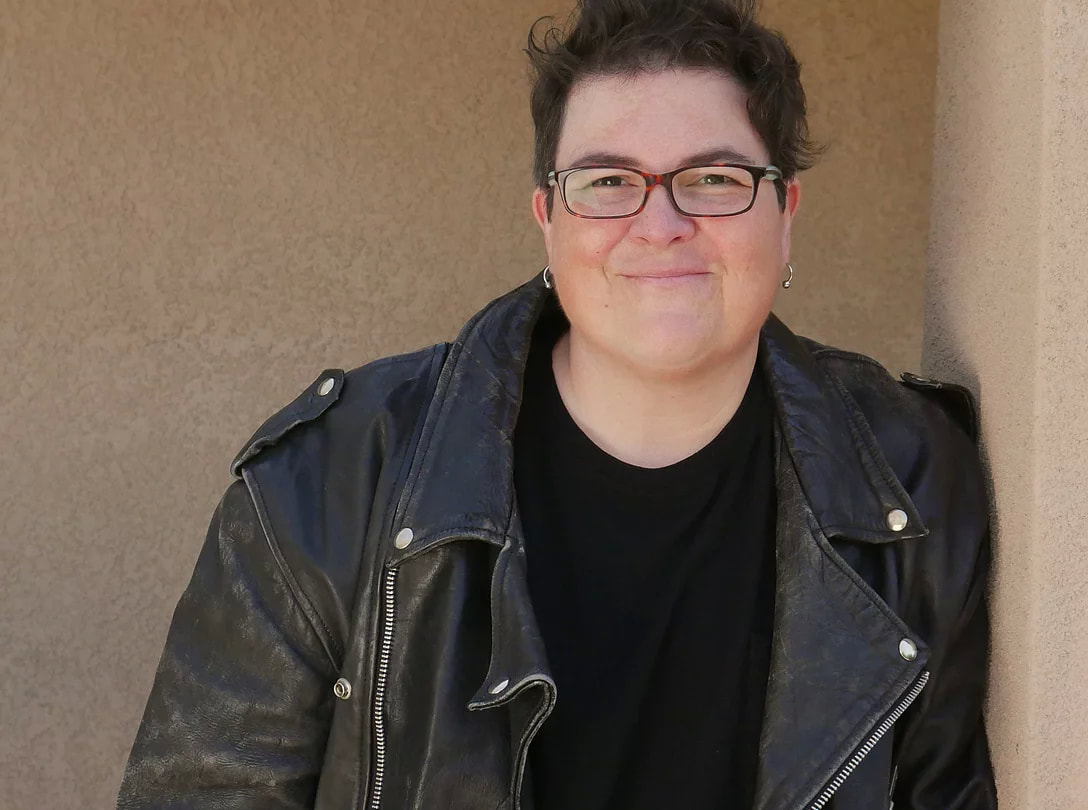Happy book birthday to Camille Gomera-Tavarez's debut collection of short stories, High Spirits!4/21/2022 We're wishing a huge happy book birthday to Camille Gomera-Tavarez and her debut collection of short stories, High Spirits. Today, e.E. Charlton-Trujillo interviews Camille about her debut which Kirkus Reviews calls, “a labor of love with a dedication of family.” A Publishers Weekly starred review says High Spirits is, “full of vivid and poetic imagery, settings worthy of drinking in, and thematic material ripe for contemplation about identity, intergenerational memory, and patriarchy and toxic masculinity . . . ” High Spirits is a collection of eleven interconnected short stories from the Dominican diaspora. It is centered on one extended family – the Beléns – across multiple generations. e.E. Charlton-Trujillo: Camille, I am so excited to be in conversation with you. You've written a collection of rich and vivid short stories that span from the U.S. to the Dominican Republic's fictional town of Hidalpa -- Santo Domingo, Paterson and San Juan. How are you feeling about High Spirits finally coming into the world? Camille Gomera-Tavarez.: First, thank you so much for taking the time to read it, E.! I admire you so much, so thank you! And, well, I am feeling very anxious about the book launching as it is pretty much the first thing I’ve ever published at all. When I was starting senior year of college and writing the first threads of High Spirits, I couldn’t have imagined I would ever call myself a published author. When I started, I was still working through mixed emotions about my grandmother passing, and by the time I got the book deal my grandfather had recently passed. So, I feel really lucky to have been given the chance to properly finish this project and give it the love it deserved, especially in their honor. I hope that the people that I want to read it – young Afro-Latinx people and Dominican-Americans – will find their way to my stories. e.E.: Between what is real and what is magical, you explore the intersections of intergenerational loss, love, identity, class, masculinity, femininity, family and more. Can you talk about the choice to intertwine these topics and characters in the eleven short stories? CGT: As I worked through the stories, my methodology was to take a memory from my own life or a story from my family’s life, write it out plainly, and find a central theme that I could then tie back to masculinity and identity in some way. And then I would just layer it beneath this established family and characters I’d created. At first, I was just writing a couple stories in the same universe, and then after reading Louise Erdrich’s Love Medicine and seeing a family history told in short stories, I realized that this was exactly what I wanted to do and exactly the kind of thing I wanted to read. And at the time I was taking a class on Latin American literature and learning the history of magical realism in the Americas, which also greatly influenced me as I was writing. e.E.: Why was it important for you to move between what is real and what is magical in this collection? CGT: I love books with just a touch of magic. I think the first book I read like that was Song of Solomon by Toni Morrison and I was just mind blown in high school. I feel like there’s this resurgence of similar touches of magic with TV shows like Atlanta, Rami, and Reservation Dogs. I love getting a little lost and not knowing exactly what is going on and having to figure it out. I really found a piece of myself when I learned about Lo Real Maravilloso and its place in the canon of literature. It felt really powerful to free myself from the rules of western structures of storytelling. I really hate rules and grammar and stuff. And, if you want to get philosophical, what even is reality? Isn’t everything made up? So why can’t a boy be possessed by a demon that pulls him through time? Why can’t that exist alongside reality? If you visit the Caribbean and other places, stories like that are commonplace and taken as truth. Those family stories are what inspired me to write the book. e.E.: Barbaro's barbershop culture (and political banter) set a perfect backdrop for ten-year-old Yoanson's first (and unwanted) haircut. Barber Tony and Yoanson's older brother Jose see haircuts and manhood differently. Why is this important for young readers to see? CGT: I wrote that story after a talk with my brother. Initially, I wanted to write something about my experience at Dominican hair salons, where I went at least once a week to get my hair blown out and straightened. And it was often a demeaning experience. But then, we were talking about a time when my father had punished my brother by making him shave his head to the scalp. Then, I was looking through YouTube and I found a similar recent video of a Dominican father taking his 10-year-old son with big curly hair to get a haircut and the boy was not happy about it. So, I was like “Ok, this is a thing.” I wondered why men do this and why this is an issue, especially for young Black boys trying to find joy in the world. I feel like hair is such a personal thing. There is this hardness, especially with Black and Immigrant parents, that I feel doesn’t have to be there when preparing your child for the world. And a lot of times people are forced to be accomplices in these aggressions that are going on around them because they don’t know how to speak up or stop it from happening. So, I wanted to present someone like Tony as an example of how someone might be able to use the privileges they do have to step in when they see something wrong. e.E.: Skipping Stones’ unrequited, same sex love story was palpable. My heart was breaking for Ana while also understanding Zahaira's reluctance. Why was this story important to include in the collection? CGT: I felt like I needed to write a love story or just something that wasn’t as heavy as the other stories. So, I figured it may as well be a queer love story (straight ones are so boring). I feel like I had a similar relationship with the first girl I met when I came to America who was also my neighbor and my best friend. I wanted to show a story where there is an absence of men, with these two girls, but the impact of toxic masculinity still manages to creep in, as it often does in queer relationships. So, this is how it turned out. I’m glad you liked it! I feel like it was one of the more fun stories to write, even though, yeah lol, Ana was going through a tough time. e.E.: Life After The Storm transitions the reader from what is real to what is magical, and submerges the reader as Jorge embodies the lives of women from his family over time. Would you share the choice of water, birth, storms and having a man experience womanhood? CGT: For most of the magic throughout the book, I am pulling from Afro-Caribbean traditions and spirituality which is greatly influenced by West African Yoruba culture. So, water and rebirth play a large role in Yoruba religions. I, myself, am a Pisces and a water baby. My mother went into labor with me while she was in a tub. It can be a life-giving and rejuvenating thing but also be scary and cause destruction. Especially with hurricane season every year. I pulled from several dreams I had, as well – I like to write my dreams down. I had a really impactful dream once where I was just going through my past lives, and I was my grandmother and then my father and then my mother until I got to where I was at that exact moment in bed. I woke up crying from that dream because it shook me so much, but I was also just grateful to be the product of so many choices that came before me. It shifted my perspective. Jorge is in this moment of trying to figure out his identity in a country that seems like it doesn’t want him there. I was thinking about how genealogy is often traced from the mother through matrilineal ancestry and how past trauma is passed through DNA. So, it seemed natural that he would become all the women who had made choices that led to his being in the United States. I also wanted to find a way to mess around with gendered pronouns a bit, especially going back to the theme of toxic masculinity and patriarchy and challenging notions of gender binaries. e.E.: I want to thank you so much for sharing all of this. I cannot wait for this collection to reach young readers. In the meantime, are you working on something new? CGT: I don’t know how much I can say, but yes I’m currently working on my next novel which will hopefully come out Fall 2023 and it’s definitely going to be much lighter and less serious. Whereas High Spirits takes on masculinity, I feel this next one is focused more on femininity and sisterhood. And of course, magic. e.E.: I can’t wait for your new work! Can you share where people can find you online? CGT: You can find me on Instagram and Twitter @cgomeratavarez and on my website at www.cgtdesign.net Buy High Spirits today!
0 Comments
Leave a Reply. |
Las Musas SpeakWelcome to our blog! Archives
July 2024
Categories
All
|




 RSS Feed
RSS Feed